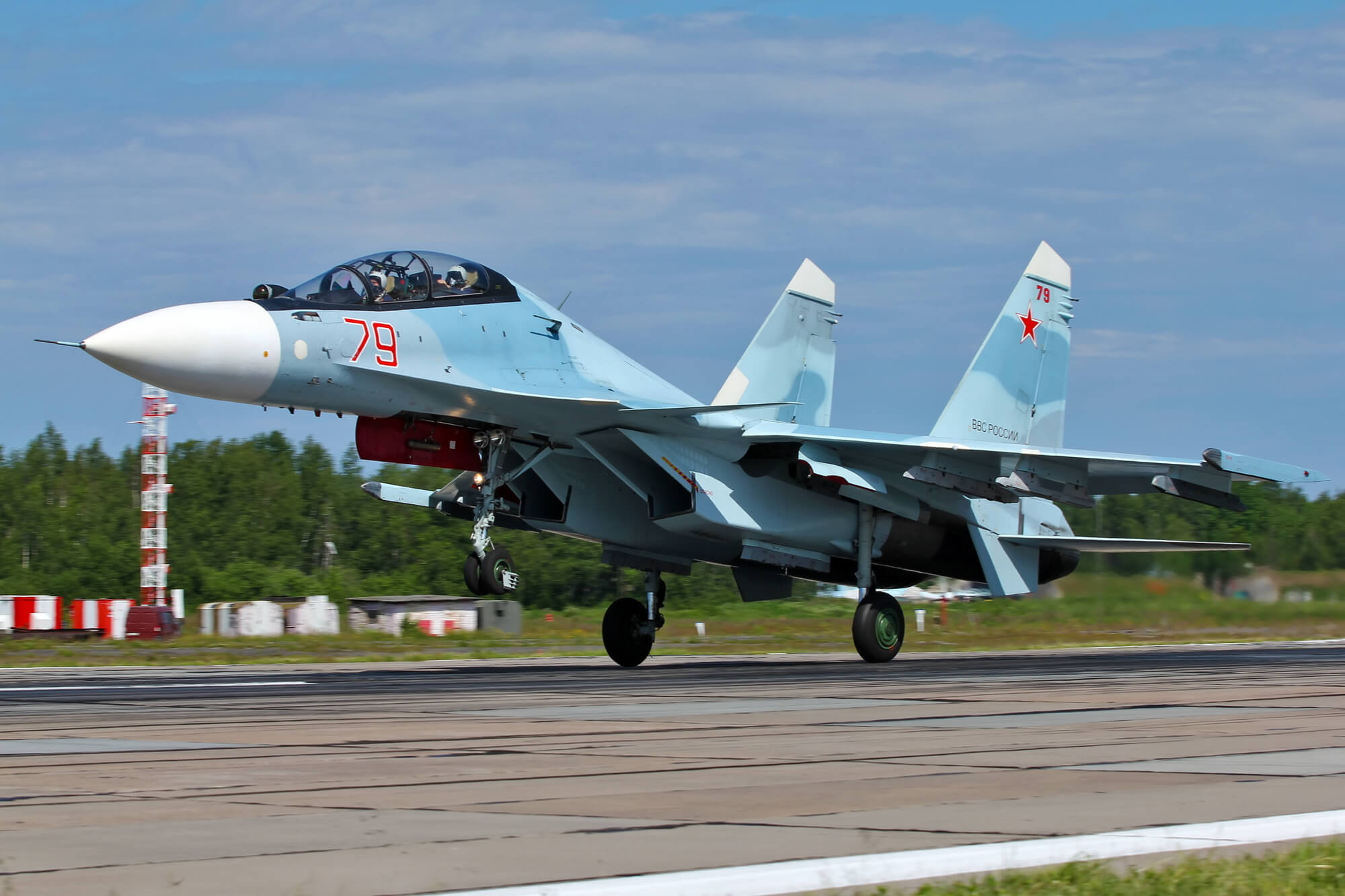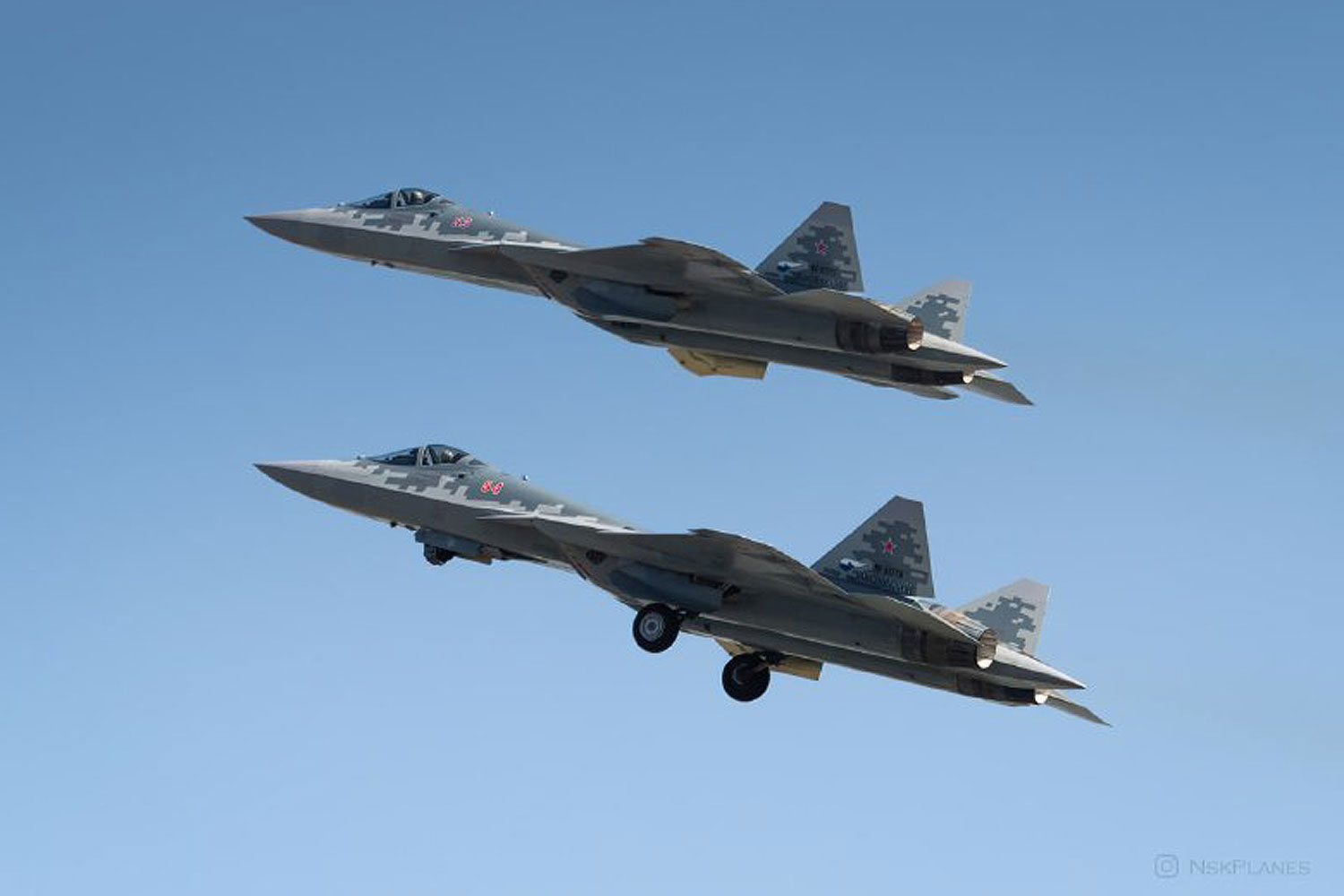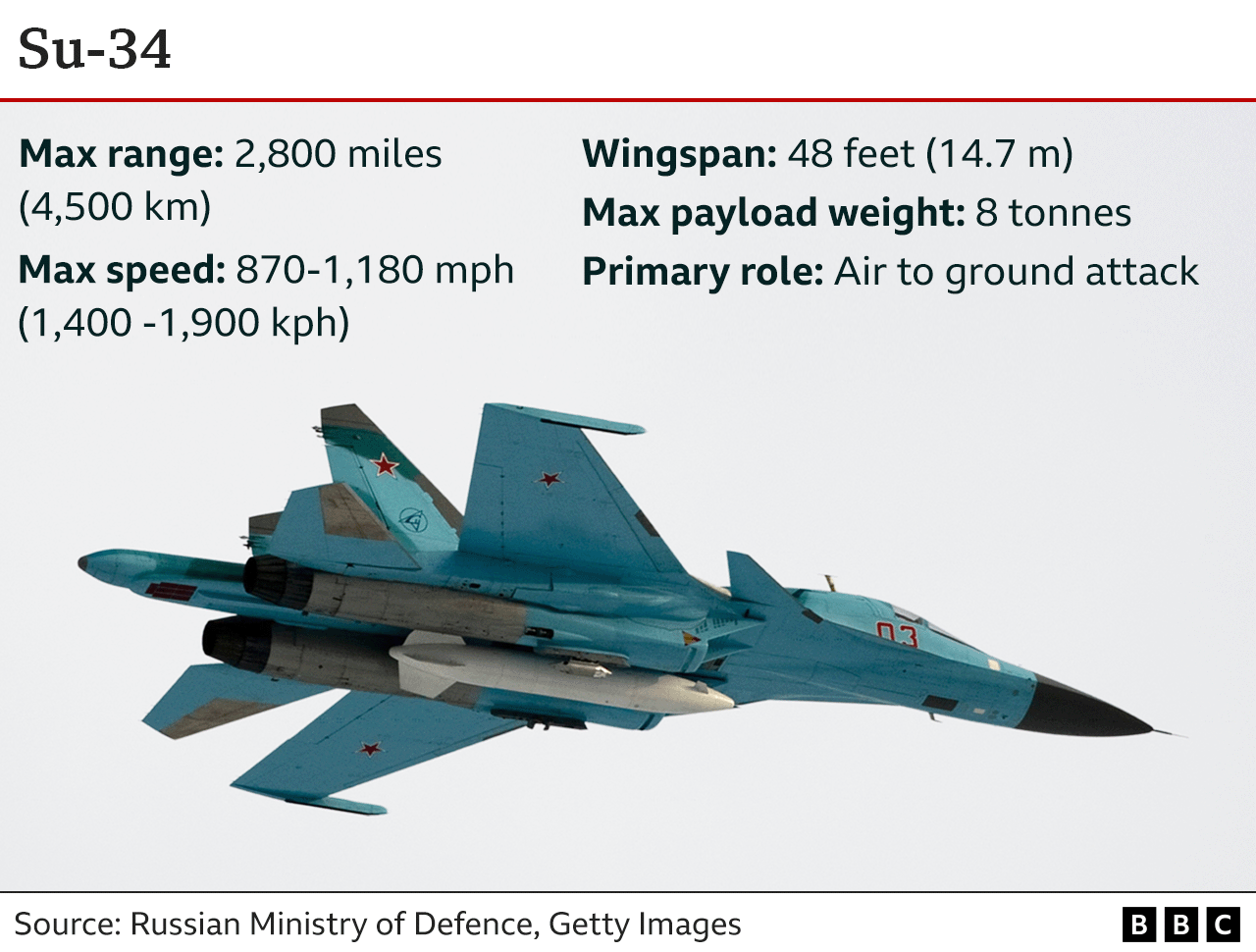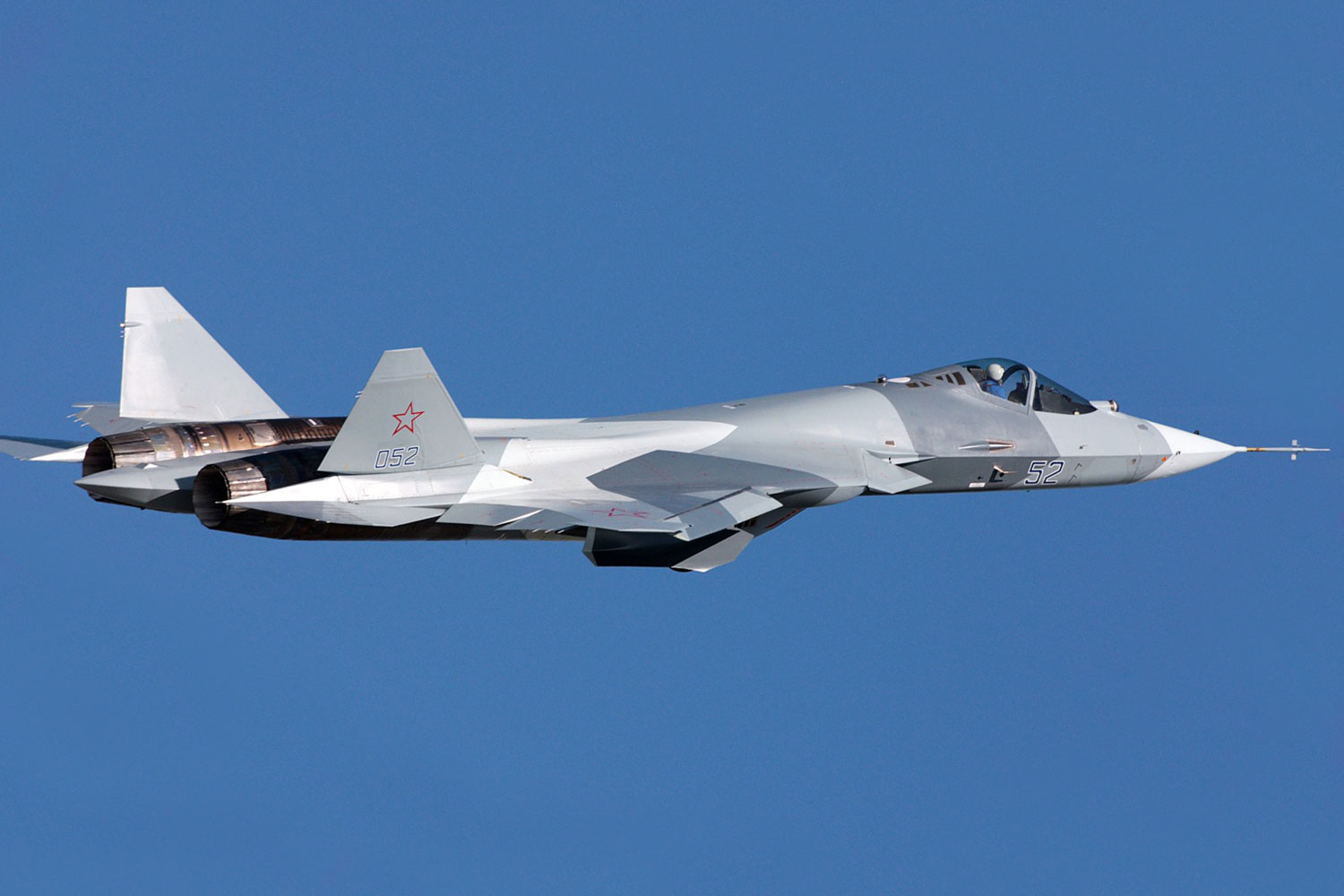Su Aircraft - Sukhoi Su-35 (Russian: Сухой Су-35; NATO reporting name: Flanker-E) is the designation for two advanced versions of the Su-27 air defense aircraft. These are single-seat, twin-engine super-maneuver aircraft designed by Sukhoi Design Bureau and manufactured by Sukhoi.
The type was originally developed by the Soviet Union from the Su-27 and was known as the Su-27M. It contained a canister and a multi-function radar, which gave it multi-tasking capability. The first prototype made its service flight in June 1988. After the dissolution of the Soviet Union, Sukhoi re-designated the Su-35 to attract export orders. Four aircraft were produced and used for testing and demonstrations; there was an example of vector genes, and as a result, the Su-37 was redesigned. In the late 1990s, a single Su-35UB two-seat trainer aircraft was also produced, similar to the Su-30MK family.
Su Aircraft

In 2003, Sukhoi began a second modernization of the Su-27 as an interim aircraft until the development of the Sukhoi PAK FA (Su-57) program. This version, also known as the Su-35, features a redesigned cockpit and weapons control system, and features vector-vector missiles instead of cannons. The type made its maiden flight in February 2008. Although intended for export, the Russian Air Force became the launch customer in 2009, with the production version designated the Su-35S. They also ordered the People's Liberation Army Air Force of China.
Sukhoi Su 19m (nato Code 'flagon H'); Aircraft '07 Ye…
The first design of the aircraft, which received the designation Su-35, was created in the early 1980s, when the Su-27 was in service with the USSR Armed Forces. The final production version of the Su-27, factory coded T-10S, began mass ("serial") production in 1983 with the Komsomolsk-on-Amur Aircraft Production Association (KnAAPO). The following year, this Su-27 variant reached initial operational readiness with the Soviet Air Defense Forces.
In December 1983, the Soviet Council of Ministers ordered the Sukhoi Design Bureau to use the Su-27 as the basis for the development of the Su-27M (T-10M).
Nikolay Nikitin led the design work for most of the project's existence under the supervision of Geral Mikhail Simonov, who was the chief designer of the Su-27.
While the Su-27M basically shares a wing fuselage structure with the Su-27, the Su-27M is distinctly different from the stock version by the addition of slats, which are small bearing surfaces, in front of the wings. First tested in 1985 on an experimental aircraft,
The Russian Jet That Fights For Both Sides
Full-length canisters of the reshaped leading edge redirect airflow to eliminate moments at high angles of attack and allow the airframe to sustain 10-g maneuvers (vs. 9g on the Su-27) without the need for additional structural reinforcement.
More importantly, when working with the aerodynamic design and fly-by-wire flight control system, the aerodynamic design improved the aircraft's maneuverability and was able to briefly go nose-to-vertical while maintaining forward thrust. So theoretically, during combat, the pilot could turn the Su-27M 120 degrees and fire missiles at the target in less than two seconds.
Other notable visual changes from the T-10S design include taller vertical tails, in-flight refueling capability, and the use of a two-wheeled nose landing gear to support the heavier airframe.

In addition to increased maneuverability, another feature that set the Su-27M apart from the original design was the new weapons control system. Part of this system was the N011 Bars (literally "Leopard") multifunction radar with a phased Doppler wave tracking system that allowed detection of targets below the horizon. First installed on the third prototype, the radar turned the Su-27M into a multi-role aircraft capable of attacking ground targets.
Sukhoi Su 27 Fighter Jet Plane Editorial Stock Photo
Compared to the Su-27's N001 Myech ("Sword") radar, which was capable of tracking 10 targets and homing only two missiles at a time, the new radar can track fifteen targets simultaneously and guide the missiles to target six of them at the same time time time.
The extra weight of the N011 radar at the front of the aircraft necessitated the addition of canisters; generators would only later discover the aerodynamic advantages of these devices.
In addition, the N012 self-defense radar was installed in the rear tail tube, making this aircraft the first in the world to be equipped with such a radar.
Other changes to the aircraft include the use of upgraded turbofans, as well as increased use of lightweight components and aluminum-lithium alloys in the aircraft's structure.
Russia's Su 35 Fighter Jet, Explained
In 1987, Sukhoi began converting the first prototype (designated T10M-1) from a T-10S aircraft at its test facility in Moscow. Although it had fuel tanks, the first prototype, like several later aircraft, did not have many physical changes to the new design.
It made its first post-conversion flight on June 28, 1988, piloted by Oleg Tsoi, followed by a second prototype in January 1989.
After the conversion of two Su-27M prototypes, the actual production of the aircraft was transferred to the Far East of the country, where it was carried out by KnAAPO. The third aircraft (T10M-3), the first newly developed Su-27M and the first to be produced by KnAAPO, made its maiden flight in April 1992.

With this, the Soviet Union disintegrated, and the economic crisis in Russia in the 1990s caused the original plan to mass-produce the aircraft between 1996 and 2005 to be abandoned.
Sukhoi Su 57
With the aircraft serving as an experimental testbed to validate the canisters, flight control system and vector-vector technology.
During the dissolution of the Soviet Union, the Sukhoi Su-27M was demonstrated to defense and government officials. In 1992, at the Farnborough Air Show, the company presented the aircraft again as the Su-35.
The aircraft later conducted flight demonstrations overseas in an attempt to attract export orders, beginning in Dubai in November 1993, where Viktor Pugachev flew it in front of spectators in a mock Su-30MK airship.
The aircraft later flew to Berlin and Paris and became a fixture at the MAKS air show in Moscow.
Pavel Sukhoi's Combat Family: Fighters That Have No Match In The World
The Russian government approved the aircraft for export during the failed Sukhoi sales campaign in South Korea in the late 1990s and early 2000s;
As the Su-27M flight test program progressed, experts discovered that the pilot was unable to maintain active control of the aircraft during certain maneuvers such as the Pugachev Cobra. Therefore, the Su-27M (T10M-11) was installed in 1995 with eleven vector nozzles, and the demonstration of the resulting Su-37 technology made its first flight on 2. It did this in April 1996.
The Su-37's ability to maintain a high angle of attack while cruising at near-zero airspeed attracted the attention of the press.

In addition to the single-seat design, a two-seat aircraft was also built. In cooperation with Sukhoi, KnAAPO designed its Su-35UB generators to combine vector engines with the characteristics of the Su-27M. The aircraft, modified from a Su-30MKK airframe, made its maiden flight on August 7, 2000, and later served as an avionics testing ground.
Russia Claims Upgraded Su 57 (finally) Made Debut Flight
Sukhoi refined the Su-37's use of canisters and vectoring technology for the Su-27M, and later applied it to the Su-30MKI two-seater for the Indian Air Force.
The Su-27M (T10M-10) also serves as a test bed for the Saturn AL-41FS engine for the Sukhoi Su-57 (previously known as "PAK FA" for short).
Due to the need to modernize Russia's aging Su-27 fleet, Sukhoi and KnAAPO began in 2002 integrating glass cockpits and enhanced weapons control systems (to accommodate a variety of weapons) into existing Air Force aircraft. The Su-27SM, as the modified aircraft was named, made its first flight in December 2002.
The initial success of this project prompted Sukhoi to continue its modernization program in December 2003. Known internally as the T-10BM,
What Are Russia's Su 57 Felon Jets? The Plane Russia Is Terrified Of Losing
The airframe redesign program was intended to reduce the quality gap between Russian aircraft and fourth-generation foreign aircraft. The resulting design, also designated Su-35, will serve as an interim solution for the introduction of the fifth Sukhoi Su-57 fighter.
In addition, the aircraft was to be a single-seat alternative to the two-seat Su-30MK design on the export market.
In many respects, the design of the T-10BM is more similar to the exterior of the Su-27 than the Su-27M. While testing the Su-27M's thrust-vectoring genes and aerodynamic design, Sukhoi concluded that the loss of maneuverability caused by the removal of the wings - their design places weight on the airframe - could be compensated for by adding thrust-vectoring nozzles.

Industrial advances in avionics and radar have also reduced the weight and size of such components, reversing the aircraft's weight curve.
Sukhoi Su 57: Famous Russian Aircraft: Gordon, Yefim, Komissarov, Dmitriy: 9781910809938: Books
Therefore, the designers removed the canisters (and the rear air brake) found on the Su-27M; the size of the vertical tails, rear cockpit trunk and tailboom was also reduced.
Thanks to these changes, as well as the increased use of aluminum and titanium components, designers reduced the curb weight of the aircraft.
Su-35S cockpit layout: head-up display, two multifunctional liquid crystal displays and control stick with HOTAS control
While the Su-27M project had avionics to make the aircraft a multi-role fighter, flight tests with the Russian Air Force
Difference Between Rafale And Su 35s
Su 33 aircraft, su 35 aircraft, su 37 aircraft, su 30 aircraft, su series aircraft, su 34 aircraft, su aircraft registration, su 22 aircraft, su 27 aircraft, su 24 aircraft, su 47 aircraft, su 30 fighter aircraft
